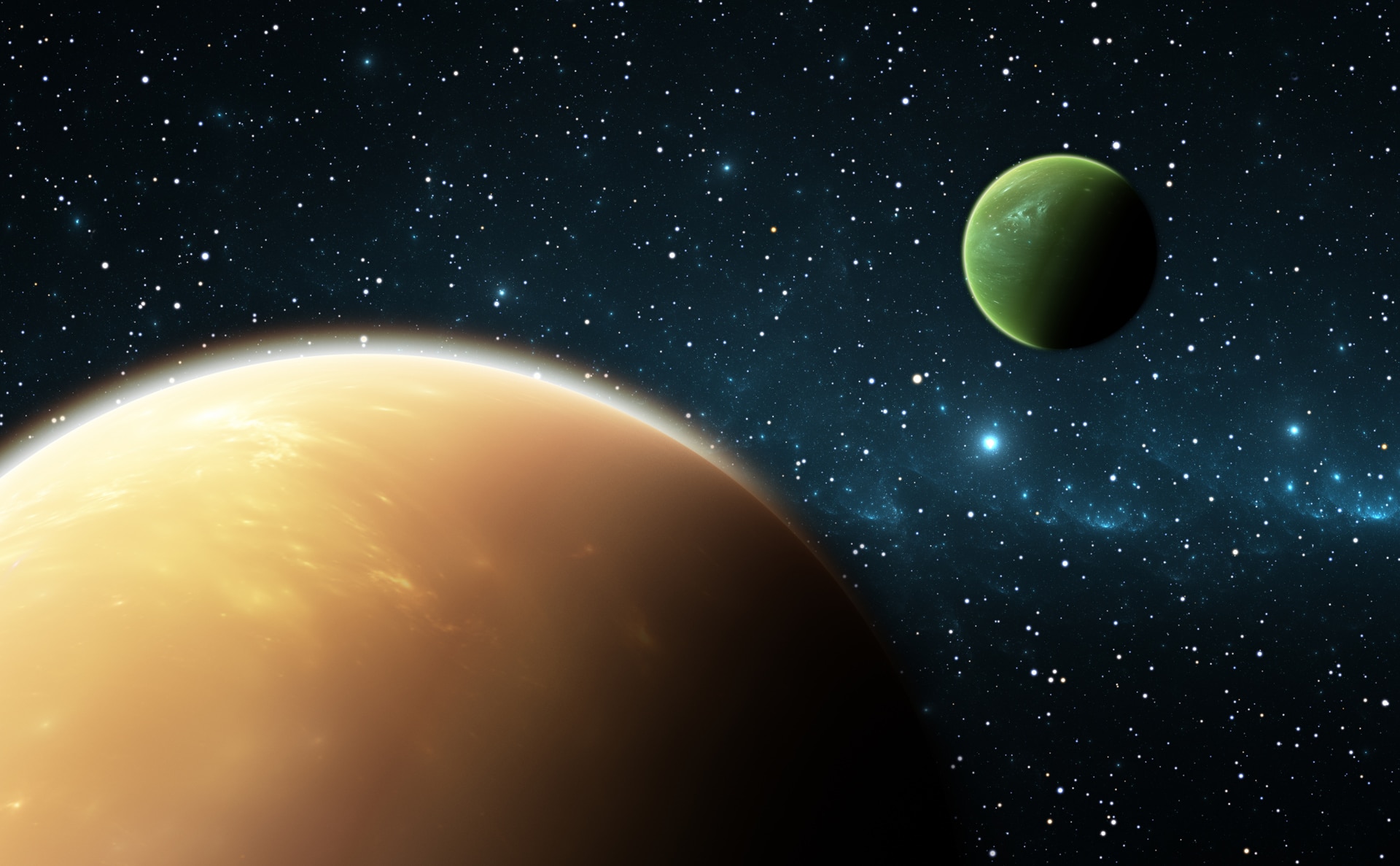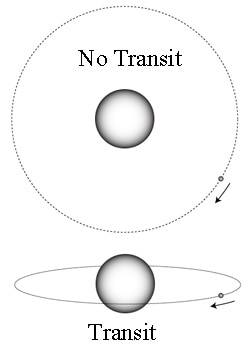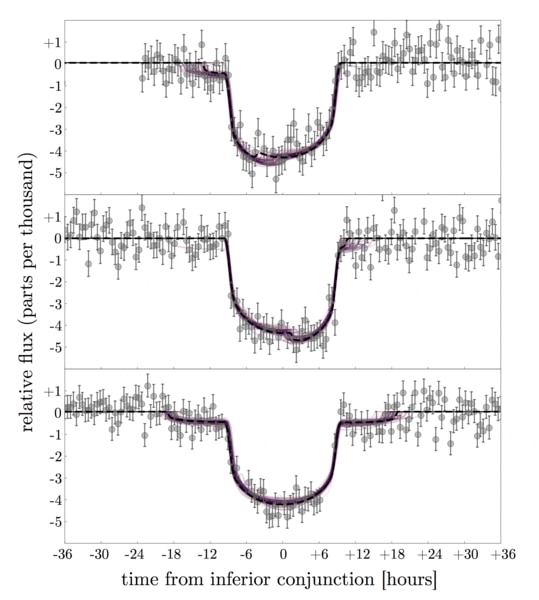Create a free profile to get unlimited access to exclusive videos, sweepstakes, and more!
Have astronomers found evidence for an exomoon? Maaaaaaaybe.

[Artwork depicting a gas giant exoplanet with a gas giant exomoon. Credit: Shutterstock / Jurik Peter]
In a paper just published on the astronomy preprint server called arXiv, a group of astronomers has made an astonishing claim: They have found evidence of the possible existence of an exomoon, a moon orbiting a planet orbiting another star. If true, this will be the first moon orbiting an exoplanet ever discovered!
However, I want to be really, really clear here: The evidence is very interesting, and I might even use the word compelling. But it’s not conclusive, and certainly not confirmed. Importantly, the paper has not yet been peer-reviewed, either (it was released early because a news organization found out about upcoming observations, and the authors wanted to get ahead of any news stories that might be sensationalized; normally, I wouldn’t write about a non-peer-reviewed paper, but I agree with them, and hopefully this will curtail inaccurate coverage). Assuming it passes peer review, what they have here is evidence, which means it needs to be examined carefully, and follow-up observations must be made to further investigate it. If it pans out, it’s a major discovery, and a very exciting one. But please keep in mind the preliminary nature of this while reading.
The exomoon, if it exists, is orbiting an exoplanet named Kepler-1625b, which itself is orbiting a star called Kepler-1625 (and so if the moon is confirmed it will be called Kepler-1625b-I). The star is similar to the Sun, with about the same mass, though 1.8 times the Sun’s size. This indicates it’s old, and may be starting to swell into a red giant. It also means the star has a low density, which turns out to be important (more on that below). The star is about 4,000 light-years from Earth, which makes it apparently pretty dim.
The planet is a gas giant, about the size of Jupiter but with 10 times its mass, and takes just under 290 days to orbit the star once. It was found in 2016 using the Kepler spacecraft, designed to look for exoplanets. For several years, Kepler stared at one spot in the sky, looking at the light from 150,000 stars. If a planet orbits its star edge-on as seen from Earth, then every time the planet passes in front of the star, we see a transit, a mini-eclipse. The light from the star dims a bit, and does so once every orbit, revealing the presence of the planet and the length of its year. Not only that, but the amount the light dims also tells us the size of the planet (a bigger planet blocks more light).
If a planet has a moon or moons, they, too, will likely pass in front of the star, dimming it. This is an extremely tricky observation to make, because moons are smaller than planets, and the amount of dimming is very tiny indeed. Attempts to look for exomoons have been tried since exoplanets were first found in the 1990s.
In this case, the astronomers looked at over 6000 individual transits from 284 different exoplanets, and tried to fit them using a physical model of what it would look like if a planet plus a moon transited their host star. But it’s not that simple! You have to try a lot of different combinations of moon sizes, planet sizes, moon orbit sizes, and so on. A whole lot: In the end, each transit was fit with millions of combinations of different physical models!
In almost all the cases, they didn’t find anything; statistically speaking, the transits looked just like lone planets crossing the faces of their host stars. But in one case, they found a transit that looked very much like it was a planet plus a moon. And that was Kepler-1625b.
The problem is, the data are a bit noisy, so it’s not possible to be 100% sure that’s what’s being seen in the observations. Also, because of its relatively long orbit, only three transits were seen for Kepler-1625b. But the data really are interesting.
Normally, a transit is smooth and symmetric except for statistical noise. The start of the dip and the end should look very nearly like mirror images of each other. But that’s not what they saw.
In the first transit, the best model fit shows a small dip preceding the main one, and then a sudden jump in brightness in the middle of the transit. The middle one shows a sudden dip in the middle and a wiggle at the end, and the third shows dips preceding and following the main dip. If the main dip is the exoplanet, those other dips could be caused by a moon!
These transit graphs are why I say the evidence is compelling. The astronomers looked at other possible reasons for them, including instrumental problems, starspots (like sunspots but on the star Kepler-1625), and more. Nothing they found was more likely than the existence of an exomoon. Interestingly, they considered the planet might have a ring system like Saturn’s, but that should produce symmetric dips on either side of the transit, which isn’t seen in all three transits. There are physical ways a ring could do that, but they’re very unlikely. A moon is a better guess.
Assuming that’s what’s causing these extra dips, Kepler-1625b-I is pretty big: Roughly the size of Neptune! It would be orbiting the planet at very roughly 2.5 million kilometers out. That’s a long way, but consider that Jupiter has a moon, Callisto, that orbits it at a distance of almost 2 million km. Since Kepler-1625b has more mass, it could hold on to a big moon at a larger orbital distance.
The size of the moon (again, if it exists!) is interesting, too. No moon anywhere that big exists in our solar system, and in fact physical models of how moons form show you can’t form one that size. But that’s not necessarily a problem! Those same models predict the Earth shouldn’t have a moon as big as our Moon, either. But the model assumes the moon forms with the planet, at the same time, and ours is more likely the result of a huge collision that occurred after the Earth formed. Also, it’s possible that a massive planet could capture a big moon — we know Neptune’s moon Triton is a captured object, as are several moons of Saturn and Jupiter.
Another bit I found very interesting: If a moon orbits a planet too far out, the gravity of the star can destabilize the orbit. The moon has to be close enough to the planet for the planet’s gravity to dominate, and this distance can be calculated mathematically. It’s called the Hill sphere, and it depends on the planet’s and star’s density and the planet’s distance from the star.
At first, it was thought that the star Kepler-1625 was much like the Sun. That was a problem, because a star as dense as the Sun would quickly destabilize an exomoon around Kepler-1625b. But updates to the data show the star is actually bigger than first supposed, possibly on its way to becoming a red giant, as I mentioned earlier. That means its density is lower, and in fact the moon should be stable over billions of years.
So, after all this, how can we find out if it really exists or not? The best way is to do follow-up observations with a big telescope to carefully measure the star’s light before, during, and after a transit of the exoplanet. And that’s just what the team is doing: They have Hubble observations planned for October, during a predicted transit. Given what they know, they’ve been able to predict what the transit graph shape should look like if the moon exists.
If the data are consistent with that, well then, that’ll be interesting, won’t it?
There have been a handful of other exomoon claims made in the past, but like this one, they remain unconfirmed. Given our own solar system, where most of the planets have moons, and even many asteroids and Kuiper Belt Objects do as well, it seems overwhelmingly likely that exoplanets will too. And that’s fine, but we won’t know for sure until we find one. Interestingly, there’s a search on right now for potential moons orbiting the exoplanet Beta Pic b, and if any exist they may very well be found.
This is so cool! We’re right on the edge of a new kind of astronomical endeavor. Once we find one of these exomoons we’ll find more, and they’ll be incredibly useful in helping us understand the planets they orbit.
Of course, that’s still in the future. But maybe not so far in the future.
My thanks to David Kipping, one of the paper authors, for a helpful conversation on this.




























